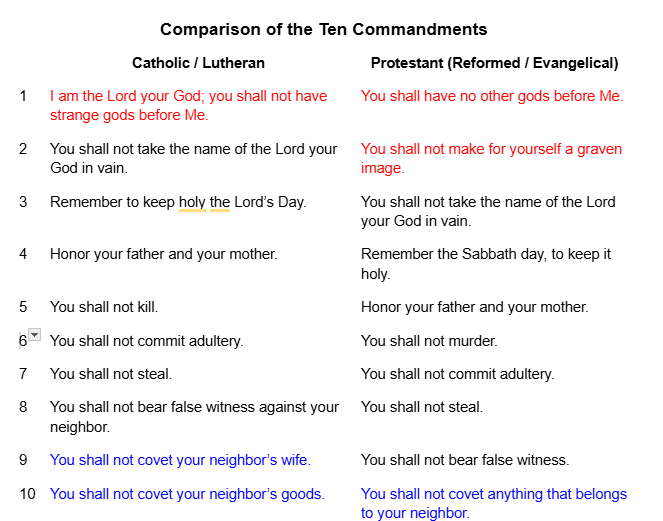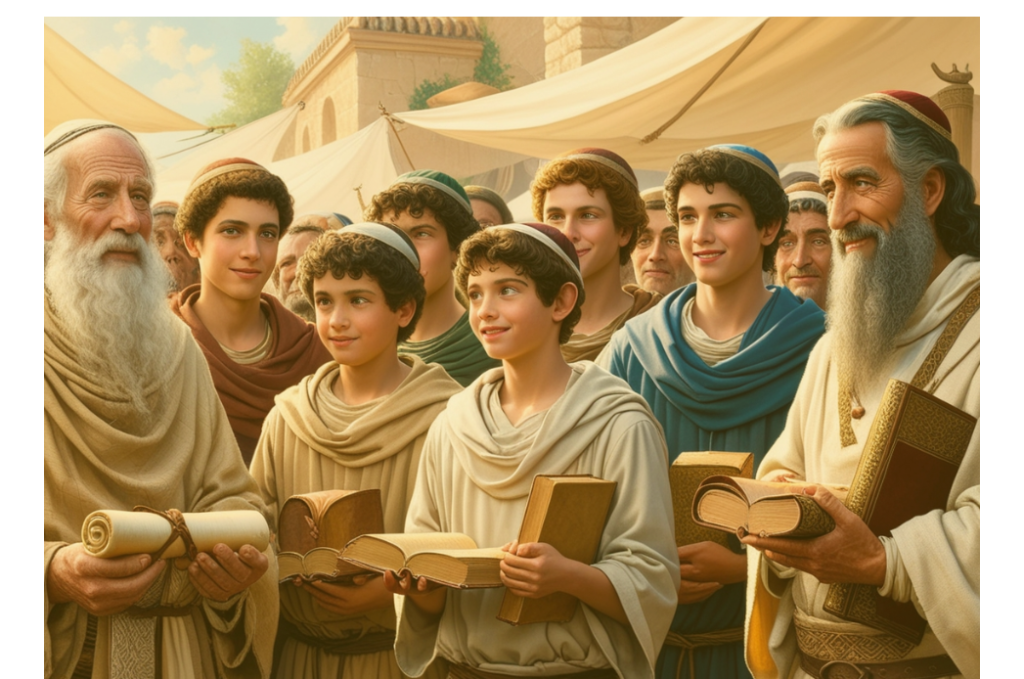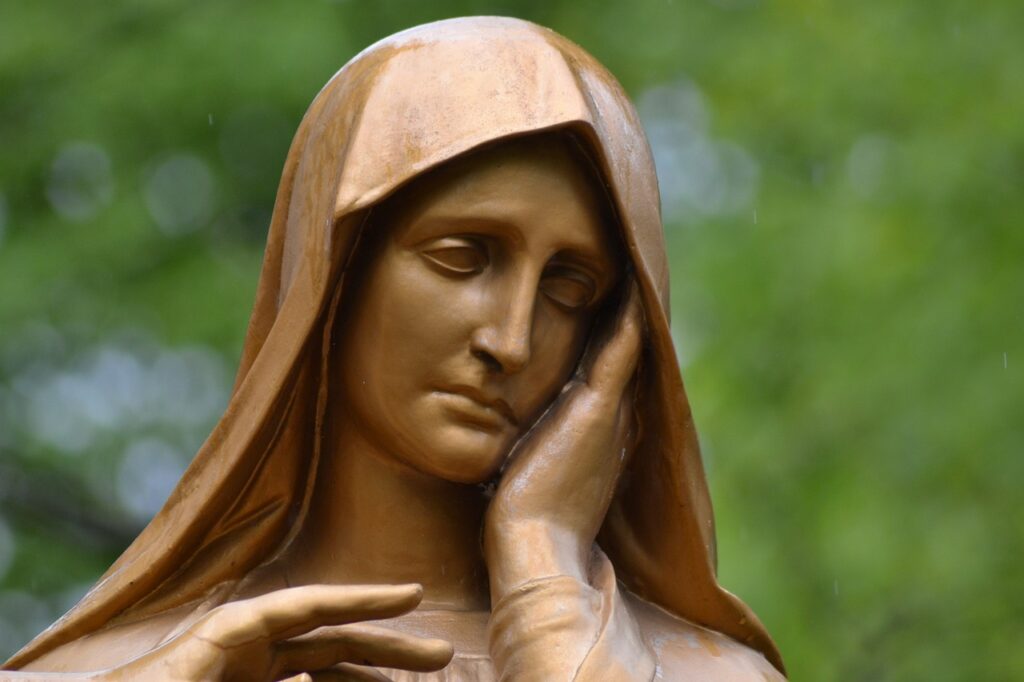What Claim Is Often Made?
You will often hear some Protestants accuse the Catholic Church of changing the Ten Commandments—specifically, of removing the commandment against idols to justify the use of statues and images in worship. They argue that Catholics combined the first two commandments (no other gods and no graven images) into one, and then split the last commandment (about coveting) into two to keep the total at ten.
All of this was done to make room for the veneration of statues and images. They believe the Church intentionally downplayed the biblical ban on making and bowing before images by removing the commandment forbidding graven images.
This is often a serious accusation and it deserves an answer. So let’s look into it by comparing the Protestant list against the Catholic.
Comparison of the Ten Commandments

A great YouTube channel, Reformed to Rome, has an excellent video that dives into the debate over the Ten Commandments and how they are numbered differently between Catholics and Protestants. I highly recommend giving it a watch if you’re interested in the deeper biblical and historical background. But to summarize one of its key points: Catholics recognize that the commandment against serving idols is not a separate rule, but part of the broader command to “have no other gods before Me.” Worshiping idols is simply one way of violating that larger command.
What About Images?
The Bible does not universally forbid images. In fact, God Himself commands the creation of images in several places:
The Ark of the Covenant had two golden cherubim (Exodus 25:18–20).
The bronze serpent was lifted up in the wilderness at God’s command (Numbers 21:8–9).
Solomon’s temple was filled with imagery—palm trees, oxen, angels, and more (1 Kings 6–7).
You can read more about the use of relics and icons in the Bible in my article: Relics Have Always Been, and Will Always Be, Christian
The point is not that images themselves are evil—it’s worshiping them as gods that are condemned. This is why the Catholic Church is clear: honoring saints or religious figures through statues is not the same as worshiping them.
So Why Is There A Difference?
The current Protestant numbering of the Ten Commandments can be attributed to strong iconoclastic views—which believe religious images should be removed from churches entirely. Many Protestants today follow this numbering system without realizing it stems from Reformation-era theological disputes.
The Difference in Numbering Is Because…
Catholics take the first two commandments from the Protestant list—no other gods and no idols—and combine them into one. In the Catholic view, idols and images fall under the broader command to have no other gods.
Protestants, on the other hand, take the last two commandments from the Catholic list—don’t covet your neighbor’s wife and don’t covet your neighbor’s goods—and combine them into one. This ends up grouping women with property.



